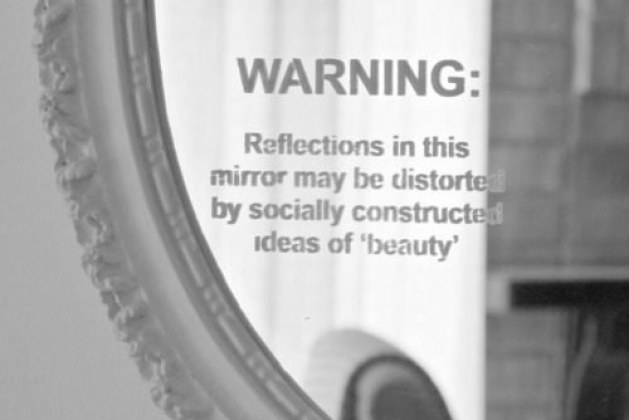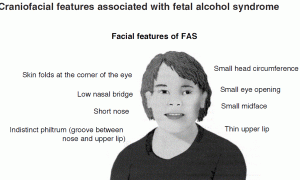
Eating disorders are best described by the image of an overly thin girl looking at herself in a mirror and seeing a heavier body. Eating disorders are mental illnesses that mess with the body’s basic need for nutrition, usually by food deprivation and sometimes by overeating, with the intention of becoming as thin as possible.
There are three well-known eating disorders:
1) Anorexia Nervosa, which involves self starvation.
2) Bulimia Nervosa, which involves binge eating, followed by self-induced vomiting, use of laxatives or excessive exercise in order to lose the gained weight.
3) Binge Eating Disorder, which involves overeating without trying to lose the added weight.
4) Eating disorders not otherwise specified, which label anyone else who experiences a challenging relationship with food, yet doesn’t fall into one specific category. For example, people who suffer from both anorexia and bulimia or only have some characteristics of one of them.
Risks of Eating Disorders
Eating disorders are best associated with teenage girls and young women, yet affect toddlers and older women as well as boys and men of all ages.
This group of illnesses knows no racial, social, economic, religious or sexual boundaries. Almost everybody is at risk, certainly in the thin-seeking western culture. Some statistics claim that individuals who suffer from eating disorders eat less a day than some people in third world countries eat in day, and that more deaths have occurred due to eating disorders than due to any other mental illness or AIDS.
To deal with the lack of healthy nutrition, the body uses other resources for fuel, causing physical systems inside us to collapse. As a result, people with eating disorders are exposed to heart disease, lung failure, infertility, epilepsy, low self esteem, isolation, rage, depression and psychosis, among others, if they manage to survive.
Symptoms of Eating Disorders
As with any other disease, identifying eating disorders early on is critical. Unfortunately, that’s usually tricky to do. It’s challenging to distinguish eating disorders from the overflow of diets. Moreover, even if a person suspects someone might have an eating disorder, it’s easy for the sufferer and her or his surrounding to deny this is a real possibility.
Nonetheless, it’s important to be aware of the symptoms and pay attention when you notice several of them taking place over a period of time. Symptoms of eating disorders include:
– An unending quest to reach a lower weight
– A never ending criticism about one’s own body, which actually gets worst the thinner a person gets
– A self esteem that depends on whether the person ate or not
– Self isolating, which worsens the more the person loses weight
– Radical and fast changes in body weight
– Radical changes in eating patterns
– Excessive use of a scale to weigh one’s body
– Excessive exercising
– Excessive eating
– Excessive thinking about food
– Fear of gaining weight
– Feelings of food-related shame
– Large portions of food regularly disappearing from the kitchen
– Avoiding food or refusal to eat
– Vomiting after all or most meals
– Refusal to eat with or in front of others
– Wearing large clothes despite weight loss
– Feeling cold even when it’s warm due to lower body temperature
– Monthly period suddenly becoming irregular or ceasing altogether
– A mixture of pains and health challenges
– Dissolving teeth
– Sleep disorders
– Dizziness and fainting
– Rage
– Anxiety
– Depression
– Obsessive compulsive behaviors
– Causing injuring to her/himself
– Suicidal thoughts
Causes of Eating Disorders
Once upon a time, the more body weight you had, the richer you were perceived to be. A bigger body meant a bigger budget for life’s pleasures, mainly food. People used to stuff their clothes to look like their bodies were larger than they actually were.
Fast forward to the twentieth century, when women achieved much greater equality than they ever had. The way to stop their race to full equality was to throw them off course. Combined with a multi-billion dollar industry, western culture started valuing women based on their weight again. This time, the thinner you were, the more self disciplined you were. The greatest worth you had.
Thin women get to be role models. They’re featured everywhere in the media and they’re portrayed in girls’ favorite doll, Barbie. The standard for a healthy, normal BMI – that tool that measures body weight versus height – represents only a third of the US population, and that standard keeps getting thinner. If you don’t meet the standard, it’s considered your fault.
And that multi-billion industry we mentioned? It includes anything from fashion retailers to plastic surgeries to weight loss programs. It also recognized the potential of getting the entire population to hate itself, so now they’re aiming for men too.
Men, who could get away with a gender-fitting job (such as an engineer or construction worker) and fixing the car to be perceived as manly until not long ago, now need to take care of their appearance and meet weight standards too if they want to be considered worthy by contemporary western culture.
It’s easy to blame sufferers of eating disorders for being vain, saying they just want to be pretty and don’t care about anything else. In reality, these women and men – who come from all walks of life and education – are victims of what we all subconsciously learn practically from the moment we are born.
Children and adults who suffer from eating disorders might also be affected by genes, anxieties and a challenging home life. A person might feel insecure, not good enough or lacking control of any other aspect in her or his life but food, or they might fear bodily changes and growing up. For some, an eating disorder is one more way of self sabotage.
Psychological, interpersonal and social causes vary from one person to another. It’s important to remember that it can happen to you even if you think you have the healthiest, happiest family around.
Treating Eating Disorders
Despite how common they are, eating disorders are usually accompanied by a great deal of shame, which causes sufferers to avoid asking for help and to refuse help if it’s offered to them. However, an eating disorder doesn’t have to be a death sentence.
It’s crucial to treat eating disorders, and it’s imperative to do so in a multi-faceted approach:
– Psychological and/or psychiatric – Since this is a mental illness that’s often accompanied by many additional emotional challenges, it’s crucial the person suffering from an eating disorder receives treatment. If the illness has progressed, sometimes hospitalization will be necessary. At times, treatment will be given in the form of art, drama or movement therapy, in order to help the patient process trauma and feelings, and in order to create a more empowering connection between the patient and her or his body.
– Physical health – A person suffering from eating disorders will likely experience a variety of health conditions that need to be treated. In addition, she or he will need to develop a new kind of relationship with food and learn to eat healthy.
– Peer support – One of the worst parts about eating disorders is isolation and the feeling that no one can ever understand what you’re going through. That’s why there’s great value in introducing patients to other people facing the same condition. Being able to talk to someone who’s been there and understands will also encourage the patient to keep moving forward. She or he can find accountability buddies to share the path.
– At the same time, it’s important that patients receive support from their family and friends, as the healing process is anything but easy. Family members and friends could benefit from getting support themselves, so they can be there both for their loved one and for themselves.
Preventing Eating Disorders
Preventing eating disorders in western culture is tough, but not impossible. While there is no guarantee that your child won’t suffer from one of these diseases, you can decrease the chances by following these tips:
– Teach her/him self esteem based on other criteria than looks, like talents and smarts.
– Expose her/him to an abundance of body figures. Look for photos online of powerful people who did amazing things in their lives, yet don’t meet the made up criteria of a thin body.
– Don’t obsess about your body weight or about how others might look.
– Teach your child skills and tools to deal with life’s challenges and to get by in different social situations.
– Ensure, as much as possible, that she or he has an empowering person to come to when things get tough. Kids don’t always feel comfortable sharing everything with their parents, so while it’s important you’re there for them, it’s also important to connect them with additional, accessible role models.
– Encourage your child to develop hobbies or have some source of passion, joy and pride.
– Teach her or him how to lead a healthy lifestyle.
– If they’re at risk of suffering from eating disorders – whether someone else in their environment has it or they’re already starting to show symptoms – sign them up to a prevention program.
Resources for Additional Reading on Eating Disorders
Eating disorders are long-term, complicated diseases. It’s important to educate yourself on the subject so that you can notice the signs, help yourself or save a loved one.
Following are a several resources for additional reading on the subject.
1) Academy for Eating Disorders – Globally Leading Eating Disorders Research, Education, Treatment and Prevention
2) Mirror Mirror – Eating Disorders Help and Information
3) EDreferral – The Most Comprehensive Database of Eating Disorder Treatment Professionals in the World
4) A Tour of 2012’s Best Eating Disorders Sites – Psychology Today (A bit dated but still recommended)
Have you or a loved one faced an eating disorder? Share your experience and tips with us in the comments.
Content retrieved from: http://www.eanswers.net/the-beginner-s-guide-to-eating-disorders1.html.




Leave a comment
You must login or register to add a new comment.